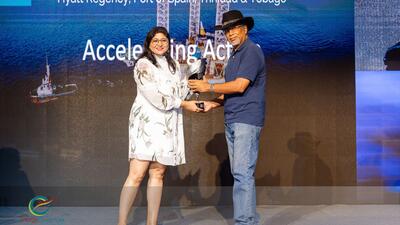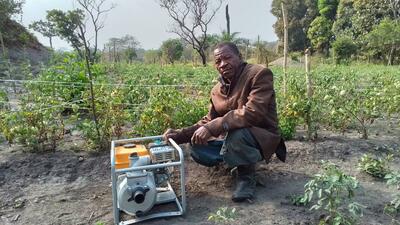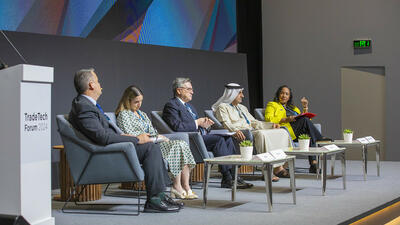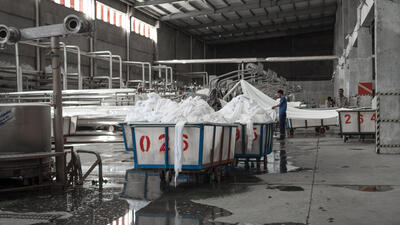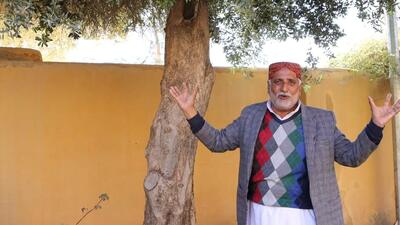
E-commerce for ecosystems
Using technology to reduce mankind’s carbon footprint is a win-win for the environment
Perhaps the most critical problem humanity faces today is climate change, given its profound long-term ramifications. Governments and the private sector should put all hands on deck to design tomorrow’s solutions to this grave problem. The 2030 Agenda for Sustainable Development contains 17 Sustainable Development Goals that, if attained by all countries – big and small, rich and poor – will make all of humanity better off by allowing us to thrive within the natural limits of planet Earth.
Similarly, a few technological disruptions are guiding the way towards the transformation of at least part of that problem. The microchip revolution, which has had an exponential explosion of cost-effectiveness, has been going on for nearly 50 years. Today, a smartphone has more computing capacity than a computer from 1990; and not just double or triple the capacity, but millions of times more and at an affordable price to at least half of the world’s population. We are only scratching the surface of how the smartphone revolution, which began just a decade ago, will impact the world as we know it.
Another paradigm shift is the social-media revolution that has given people a tool for them to voice their opinions globally. Take the case of Malala Yousafzai from Pakistan, who at age 15 survived an armed attack intended to kill her specifically for criticizing the Taliban. At 19 she became the youngest recipient of the Nobel Peace Prize and this year, at 20, she entered Oxford University as a student. More importantly, she has inspired millions of people and empowered girls around the world to stand up for their basic human rights. This viral effect has been partly due to her message and her courage, but also very much due to her more than 1 million followers on Twitter and Facebook, and those of her public-figure supporters such as Emma Watson, the British actress. E-COMMERCE This collection of technological disruptions has created the perfect conditions to make e-commerce the fastest growing industry in global trade. Over the past decade, global e-commerce has been expanding at a rate of 20% each year, or almost 1% every fortnight. At this pace of growth the digital economy is affecting basically every single existing industry, from education to banking to television – but above all bricks-and-mortar shops across the world.
E-commerce offers major solutions to climate change by reducing pressure on already exhausted or collapsing ecosystems. It provides smart solutions to the allocation of resources between producers and consumers, allowing them to exchange goods and services in the virtual bazaar without ever meeting in person. This already represents a significant reduction in the carbon footprint of trade.
Today, data analytics makes it easier for producers to know what, where and how much is on demand in order to manufacture more efficiently. As consumer preferences expand in diversity, one-size-fits-all manufacturing becomes less and less efficient, giving way to a design-it-yourself kind of consumer behavior. Moreover, e-commerce allows producers and consumers from urban and rural areas to connect and collaborate to forge a more efficient exchange of goods and services, reducing waste along the supply chain.
Still, as trade migrates to the digital realm it increases demand for electricity to run cloud services and data centers, which are very energy-thirsty. Large corporations with significant presences in the cloud have been bold about investing in cleaner and renewable sources of energy to feed their own supply chain. Take Google, for example, which has signed a 12-year deal with a Norwegian wind farm to supply its data centers in Belgium, Finland, Ireland and the Netherlands. This suggests, too, that the more we engage in the digital economy the more we support the investment that substitutes traditional sources of energy for cleaner ones. WIN-WIN INVESTMENTS In parallel, as more investment goes the way of renewables, the cheaper some of these sources become. Take solar power: solar panels are today much cheaper and more efficient than they were only a few years ago. This revolutionary development will allow more communities across the world – and especially in poorer countries – access to electricity from decentralized sources that will go online much faster than large-scale centralized energy generation projects, such as hydroelectric dams or nuclear power reactors. As these communities go online, e-commerce becomes a possibility, perhaps even a necessity, in places that would otherwise remain disconnected due to lack of other forms of basic infrastructure, like roads or a physical marketplace.
As green growth deepens its footprint on the global economy, it will become clearer that global value chains have the potential to drive emissions reductions at every corner. Transporting goods and people, manufacturing goods and providing services powered by renewable energy is more common today. As more consumers engage in the digital economy, more producers will find ways to digitize their processes, reducing further the negative footprint on the environment.
E-commerce can also strengthen the uptake of the regenerative circular economy, a trend that is leading manufacturing towards zero waste, water neutrality, 3D-printing, on-demand design and production. Through regenerative processes, we can make sure that every residue becomes an input in some other industrial process. This could lead to the eradication of toxic chemicals that currently cannot be disposed of without polluting ecosystems. The more consumption and trade goes digital, the faster industry will be able to speed this cradle-to-cradle industrial revolution of the circular economy, leaving behind the current all-things-disposable linear process. REGENERATIVE DEVELOPMENT E-commerce represents a strong driving force behind regenerative development, a business model that can grow economically while at the same time growing ecologically. Economic growth is limited by ecological growth and natural capital is decreasing worldwide at an accelerated pace, quickly approaching tipping points beyond which ecosystems enter a negative feedback loop that will speed their degradation. To move in the right direction, constraints to the kind of the desired innovation should be put in place. Concepts like biomimicry, or the imitation of nature, should be integrated into new product design.
Creating new products that replicate the efficiencies observed in nature’s symbiosis will give way to a technological paradigm where the problems we face today will not be carried on into the future, and instead will be faced with tomorrow’s solutions. May the Sustainable Development Goals inspire the way.





